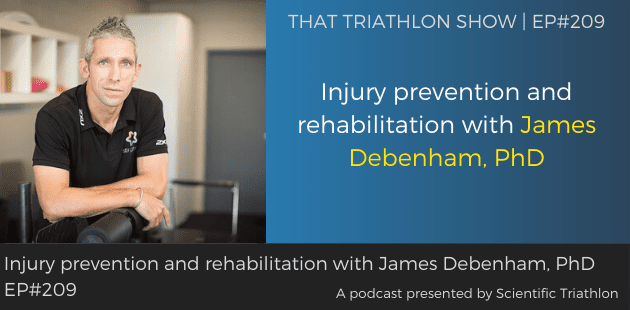Injury prevention and rehabilitation with James Debenham, PhD | EP#209. That Triathlon Show
James Debenham, PhD, is a physiotherapist and Director at Star Physio, a researcher and university lecturer, as well as an accomplished Ironman athlete himself. He discusses the ins and outs of injury prevention and factors contributing to injury development, as well as rehabilitation from injury for triathletes and endurance athletes on the “That Triathlon Show” podcast.
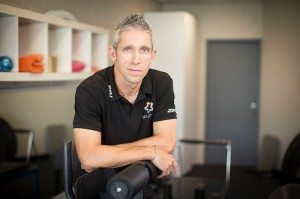
James Debenham is a world renowned physiotherapist and expert in overuse injuries,tendonitis and tendinopathy.
In this Episode you’ll learn about:
James Debenham
Injury development: What are the most important variables impacting injuries and what’s the magnitude of them?How to manage the risk of injury?
Rehabilitation of injury
Other rehabilitation exercises
When should athletes see a physiotherapist and how do we find a good physio?
Rapid fire questions
Click on the link below to listen to the full podcast!
To see James, or one of the other expert physiotherapists at Star Physio, click on the links on this page or call the office on 92124254.
https://scientifictriathlon.com/tts209/
Below is a quick summary of the info presented by James in the podcast for those that prefer to read or to fast track on the podcast!
About James Debenham
3:18 –
I’m an endurance triathlete and favor the long distances. I competed a few times at the World Championships in Kona, Hawaii.
My background is as a physiotherapist.
I did my PhD in Perth, Australia on the biomechanical aspects on achilles tendinitis injuries.
My current job is academic. I’m teaching undergraduate students at the University of Notre Dame. I’m also supervising research students.
I’m still in the clinic once a week. We specialize in working with injured endurance athletes.
I also do some coaching.
The combination of clinical work and academic work feed into each other. The research in the academic world helps a lot for the clinical work and vice versa. The practical side of the clinical work helps to teach students by giving them specific examples.
Injury development: What are the most important variables impacting injuries and what’s the magnitude of them?
7:12 –
It’s important to try and understand how tissue works and responds to training.
When training we do not only work the cardiovascular system but also the musculoskeletal tissues. What’s really fascinating is the mechanotransduction.
It’s the process by which the cells in the tissue respond to training according to the magnitude and the nature of the load. How you load them over time will determine whether or not they adapt positively or negatively. So they become stronger or weaker. If you overload them by repeatedly loading them without proper recovery they break down.
It’s all based on protein turnover. Protein is broken down as a result of stimulating events (like workouts).
There’s also protein synthesis. We are looking for a training stimulus to have this protein synthesis. So after the training stimulus the tissue becomes a bit stronger.
Time between loading is critical for success!
The different tissues have a different time frame. As an example, for the achilles tendon after a run, the mechano-transductive process takes about 72 hours depending on how hard you run.
What’s important to realize, is that at the end of that period the tissue will be stronger. But in the first 24 hour, the tissue will be weaker. So this can be important for planning certain training sessions.
Where this takes 72 hours for tendons, for bones it’s more like 5 days and muscles need approximately 2 days.
When understanding this process we can look at it in two ways regarding the factors that influence injuries: ‘How the tissue is loaded’ and ‘the ability of that tissue to tolerate load, so how strong that tissue is’.
When it comes to loading, the number one factor is intensity.
Certainly when we look to running, this is the biggest factor. We need intensity but we need to manage it.
About the load-intensity relation, it’s probably exponential. From a practical standpoint it is mediated by fatigue. If you are slightly underdosed, always leaving a bit in the tank; this is probably the most important factor to avoid injury.
The second big factor is volume of training. This can be a risk factor or a protection factor.
It’s certainly a risk factor with excessive volume. But when you consistently manage your volume, the volume becomes protective.
As opposed to increasing volume heavily over a short period of time. Then volume becomes a risk factor.
The factors that influence how strong the tissues are, are individual training history and injury history. These two go hand in hand.
Someone who has a long consistent training history have stronger tissues than someone who is new to the sport.
When you had an injury and it did not rehabilitate effectively, it’s likely that tissue won’t be that strong.
There are some other factors as the muscle strength as a protective factor.
Muscles have the ability to protect the tissue attached to them. For example strong calf muscles attached to the Achilles tendon work as a protective mechanism. This happens also at the level of joints, spine, shoulders …
Body fat is also another factor. In general we think body fat, having a few more kg’s, loads more on the tissues. Overweight does seem to be an issue but it’s mostly about the body fat that gives inflammatory effects that are elevated.
Bikefit and injury prevention. 26.16
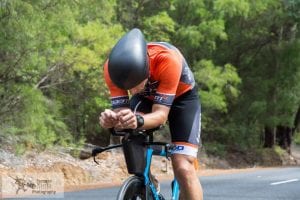
James racing triathlon with Gebiomized Bikefit by Star Physio.
Aero position is often an ongoing process for tissues to adapt to new loads. Often with pain on the bike, expert bikefit physios such as the team at Star Physio need to unload tissues for the painful area to settle down. Once it does, progressive changes into more aggressive positions can be considered.
Nutrition
Another factor to tolerate load is nutrition. Certainly, adequate protein intake is very important. The recovery and health of tissues, as they are built of this, is based on this protein intake.
1.2 – 1.8 g / kg bodyweight per day is a general guideline but in reality athletes should take in more: 2 up to 3 g/kg bodyweight per day.
About the difference in concentric and eccentric loading on injury risk: from an injury risk perspective there’s not much influence. The key thing is peak loading so from a running perspective those loads can become 8 to 12 times your bodyweight. When starting to run there’s a shift in the mechanics of the peak load going through the muscles. That’s why running is so high on injury risk. For cycling, tissues for example need to get used to a certain fit when changing position.
How to manage the risk of injury? Strong is resilient, strong is fast! 28.00
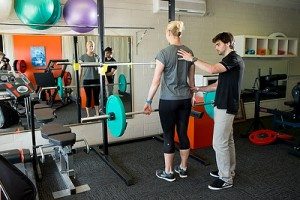
Deadlifts are a key exercise. Steve Jeffries, physiotherapist teaches safe weightlifting at Star Physio.
We can summarize this with 3 areas.
The first one is manipulating training variables properly and this is where the relation with the coach is very important.
Secondly, an appropriate strength training program.
The third aspect are the lifestyle aspects like sleep, recovery and nutrition.
Diving into strength training we can divide it in the training aspect of getting stronger and otherwise in the aspect of injury.
Most value comes from prioritizing heavy compound lifting like dead lifts, squats, barbell shoulder press, lat pull-downs,etc. They are working multiple groups of muscles at the same time. Any program should be have these types of exercises in a central role.
When doing some isolated exercises I would have a bias to the posterior chain. All the muscles running down the back of the body, up down. These have additional values to triathletes for example for the seated position on the bike.
Get the dose right! Understand the sets and reps to get the results.
The next challenging thing is getting the dose right. If you want to get stronger you need optimal stimulus. A lot of research has been done in this space. The important thing is that you need to lift heavy weights. Concerning the repetitions, the ideal would be 1 to 2 reps from ‘failure’, from not being able to lift anymore.
Building up that intensity is critical for muscle stimulus and adaptation.
So, the three most important things for adequate strength training are:
1. Heavy compound lifting
2. Isolated exercises of the posterior chain
3. It need to be really heavy weights
One very common mistake of heavy lifting is not enough recovery. A minimum of 2 minutes, ideally 2 to 3 minutes of rest. This is a really challenging mindshift for endurance athletes.
Rehabilitation of injury – “The Goldilocks Zone”!
36:35 –
Injury; good health and high performance are all existing on the same continuum. The key is in the training dosage.
The idea of a minimum effective dose and maximum recovery is very important. You want it to be just right in the middle – the “goldilocks zone’!
When having an injury, that zone shrinks to a very small window and can be very difficult to escape from.
If we look to load management an additional concept is important: ‘what do I do if I’m in pain?’
A lot of times the pain is there in the rehab journey. There was a scientific research with two groups. One group was instructed not to have any pain in their rehab exercise (abort the workout when experiencing pain), in the other group pain was allowed but it should not exceed 4 on a scale of 1 to 10. The outcomes for the second group were much better. So having some pain is actually ok but it should stay within those boundaries (4 out of 10 maximum) to be able to load progressively.
Practically for example for a runner this would mean that very rarely is total rest the answer. There are of course occasions, like trauma, where total rest will be necessary. When getting to the rehab point, the patient can run, even if it’s just a few steps.
Consistent loading for success!
The first thing in the rehab is to get consistency in the loading, so giving a certain dose of loading to heal. For example, a dose of 2 to 3 sessions per week and evaluating every day the 4 out of 10 pain rule. This can be just as simple as 10 x 30 seconds of easy running and staying in 4/10 pain rule. This is favourable for healing, particularly for chronic injuries.
We can scale back volume as much as we need to. There is no place for intensity here. It should be low intensity but this is not the same for everyone.
I like heart rate as a metric. If using a 3 zone model, low intensity would be up to 75% of max heart rate. If working with pace for running, a 6:00 / km pace for an ‘average’ runner is appropriate. For elite runners it would be at 5:30 / km or 8:45 per mile.
It’s important to educate the athlete of the importance of this as it is a mindshift for athletes.
Running as treatment for running injuries!
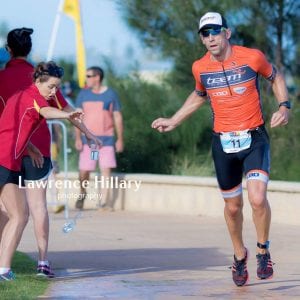
James Debenham and the Star Physio Team are experts in overuse injury management and prevention
Running is the solution to a running problem. Running injuries can get chronic. Getting the running frequency, even if it is highly diluted, is very useful. When starting to progress the volume, you may progress pretty quickly. So it is important for the athlete to see that progress.
Someone who was injured for a longer time will progress slower than someone who was injured for a short period.
For example starting with a walk-run of 10 x 30″ running / 60″ walking. It can be done 3 times a week on non consecutive days unless it’s a stress fracture where it would be 2 times per week. This can be progressed to a 30′ session where you do 5′ of jogging and 1′ of walking. This can be seen as a threshold to start with continuous running. Ideally the volume is progressed every 2 weeks. Those 3 runs per week are identical runs.
With a lot of athletes I like to do a 30′ run where the athlete goes out running and runs until there is a natural break like a traffic light, stop to take a drink, etc. These natural stops are about 1 minute. The objective here is a spread over 4 weeks where you progress to go running consistently for 30′. After that there is about another period of 4 weeks (this is very individual) and when the athlete can give me 3 runs of 30′ of continuous running the athlete is no longer a patient. At that point the athlete can progress further. The volume is still more important than intensity.
A good guide is to progress with a maximum of 15′ of running per week. A consistent, conservative approach is very important. Biologically the tissues need that walkthrough.
An additional 4th run can be implemented for pragmatic reasons. For example, a longer run can’t yet be done, so a 4th run is done to progress the volume.
Other rehabilitation exercises
58:50 –
From a rehab perspective certain rules have to be adapted. Compound exercises are priority in terms of prevention and performance but with injury it would be isolated exercises.
For example with a hamstring injury we would anticipate that the hamstring muscles are weak and that we need to strengthen them. Also the muscles nearby and muscles in the posterior chain such as the hip extensors would get a strength focus in isolation. Once satisfied they are developing the compound exercises would be integrated. Eventually, once we got adequate force in the hamstrings, that strength would be maintained with the compound posterior chain exercises.
The same would be true for shoulder and back injury. This last one is a bit more complicated.
From the perspective of physio a lot of passive modalities are used like electro-magnetic therapy, soft tissue massage, etc.
While a lot of these provide temporary pain relief, their effect is quite negligible when it comes to recovery from the injury.
Some other elements as nutrition, sleep, recovery are important as well.
Another very important aspect is the psychological effect of injury. When injured it’s quite normal there’s some psychological distress which has to be managed by the delivery of a very clear management plan. The athlete has to know what’s wrong and have a certain time frame. Attending to that is a very important part of rehab.
When should athletes see a physiotherapist and how do we find a good physio?
1:06:00 –
Having a physio in your team at all times is really valuable.
The communication between coach and athlete is inherently biased between what we think we want them to hear. As an athlete and having a niggle you may be reluctant with telling that to your coach. The introduction of someone who is independant can be really good as a mediator. In this way the physio can filter the information of the athlete and communicate it to the coach for the athlete’s benefit.
For example the physio may say to the coach that the athlete has a niggle which is fine at the moment but that the intensity should be reduced.
When having a niggle, if you got some kind of pain which goes beyond the 4 out of 10 rule your pain is probably legitimate. At that moment you can take 2 to 3 days of rest to give the tissue time to adapt. If it didn’t recover you can seek help.
Another time where you should seek help is when your pain is really severe. For example when having significant pain at rest.
Likewise, when having pain at night this is a probable indicator of a significant injury.
Also, when the pain area is red or swollen, or you had a trauma you should seek for a professional opinion sooner rather than later.
When seeking professional help you should seek clinics with a certain expertise. For example, our clinic has expertise in endurance sports.
Not all physiotherapists are the same!
Watch out for clinics that are passive in nature. Passive treatments do have a place, but they shouldn’t be the key ingredient. Load management, as explained before, is key.
Another thing that has value is that a physio knows about an injury as he/she has been there themselves. This can have some empathetic value, understanding what the athlete is going through.
Seeing a physio once a year is a minimum. As an athlete you should be cautious of going to a physio without explaining your situation but by asking the physio to tell you what’s wrong. The physio may find lots of abnormalities you didn’t know of but that are of relative importance. You run the risk of over-investing in something which is of minor importance. For example a leg length discrepancy.
Rapid fire questions
1:14:30 –
What is your favourite book, blog or resource related to endurance sports or your field of expertise?
From a training perspective Alan Couzens’ blog
About strength and conditioning there’s the stronger by science podcast
What is your favorite gear or equipment?
My favorite piece of gear is protein supplements.
I use a whey isolate. You should search for the highest proportion of protein within 30g of serving. The protein I take is from a company called R3.
What is a personal habit that has helped you achieve success?
For me it’s deadlifting. Once you can deadlift a certain weight you’re inches away of being bulletproof. For me my resilience has gone up a lot with deadlifting.
A target weight relative to your bodyweight is that you should lift your bodyweight as an endurance athlete. If you can get closer to 1.5x your bodyweight this is ideal.
Check out https://scientifictriathlon.com/ and “that triathlon show” for some other great info and podcasts.
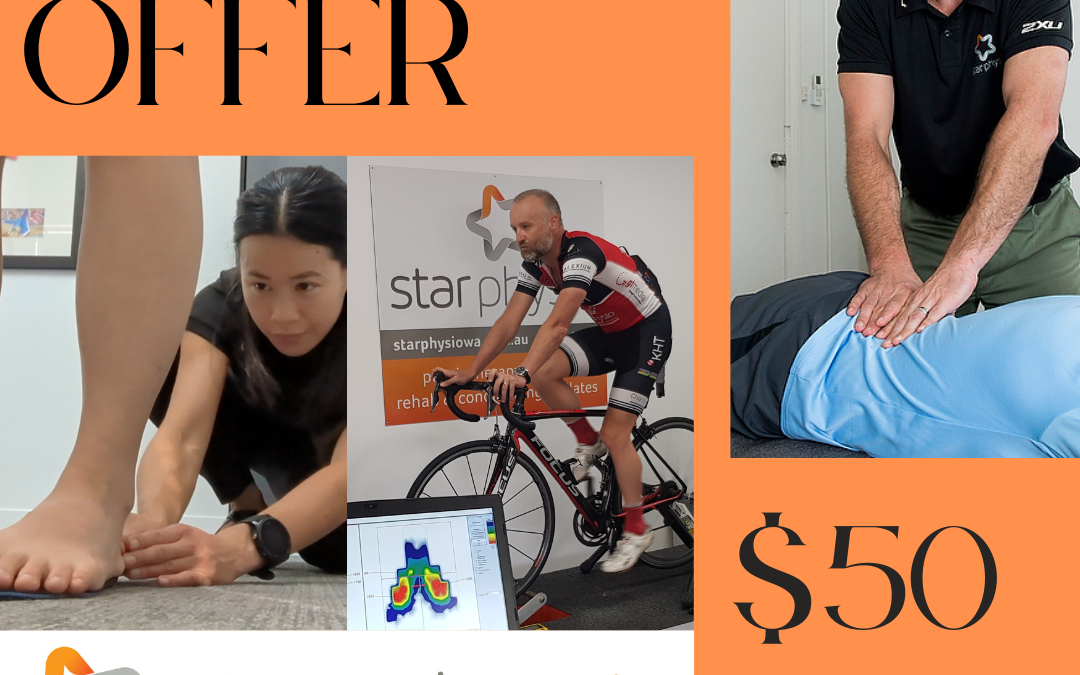
Winter $50 Off Special
Special Winter Discount Offer! It's cold outside... motivation is low... what better time to get in and see one of our experts to kick start things for you! DO you have niggles or injuries you are putting up with? Are you uncomfortable on you bike? Are your old...
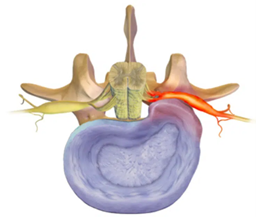
Best Sciatica Treatment
Sciatica treatment! Simen Sletten is an expert in sciatica treatment. He has double degrees in physiotherapy and sports science as well as two post-graduate physiotherapy degrees. Simen has lectured in the management of disc pain and sciatica internationally....

Disc Bulge
Disc Bulge and Low Back Pain: What You Need to Know Ever had an MRI for lower back pain that showed a disc bulge? You might be wondering if that's the culprit behind your back pain. Here's a breakdown of what disc bulges are and what they really mean for you. Simen...
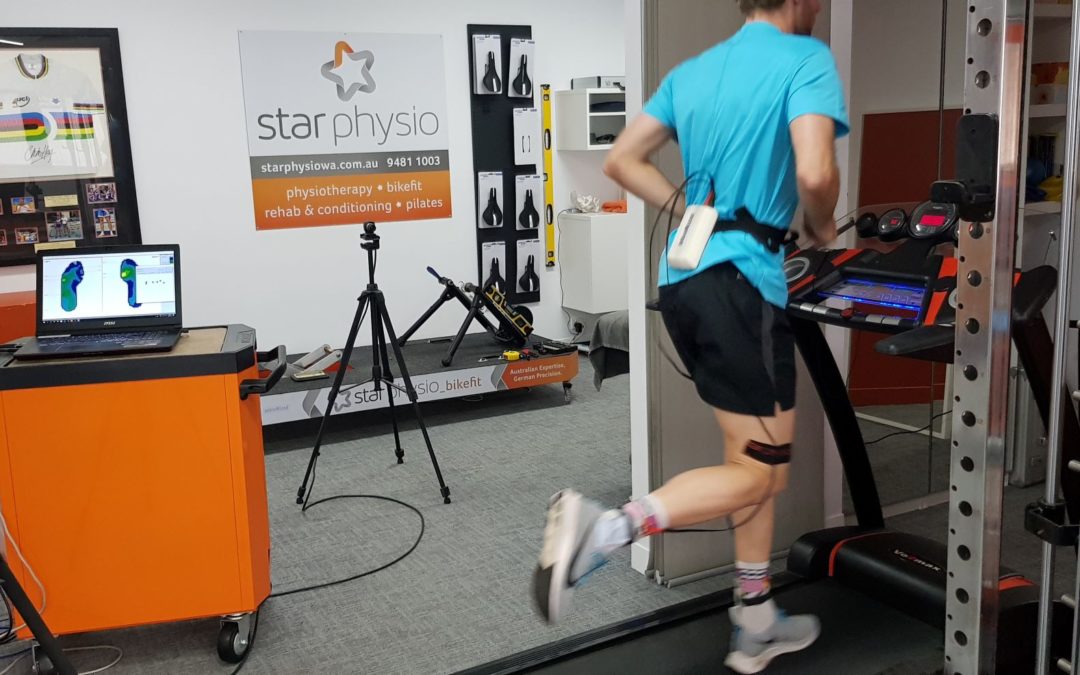
Best Running Shoes
2023 Best Running Shoe Review Practical tips from the expert! Julie Pham provides a Sports Podiatrist’s and Physiotherapist’s insights to help you choose the best running shoe for you! Changing Running Shoe Designs Have you noticed how much running shoe designs have...

